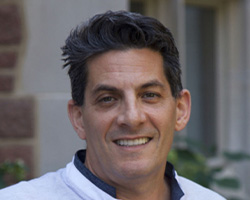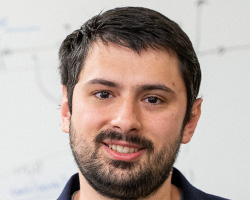WashU researchers map individual brain dynamics
WashU neuroscientists ShiNung Ching and Todd Braver develop method to create precision brain models with applications to personalized medicine

The complexity of the human brain – 86 billion neurons strong with more than 100 trillion connections – enables abstract thinking, language acquisition, advanced reasoning and problem-solving, and the capacity for creativity and social interaction. Understanding how differences in brain signaling and dynamics produce unique cognition and behavior in individuals has long been a goal of neuroscience research, yet many phenomena remain unexplained.
A study from neuroscientists and engineers at Washington University in St. Louis addresses this knowledge gap with a new method to create personalized brain models, which offer insights into individual neural dynamics. Led by ShiNung Ching, associate professor in the Preston M. Green Department of Electrical & Systems Engineering in the McKelvey School of Engineering, and Todd Braver, professor in the Department of Psychological & Brain Sciences in Arts & Sciences, the work, published Jan. 17 in PNAS, introduces a novel framework that will allow the researchers to create individualized brain models based on detailed data from noninvasive, high-temporal resolution brain scans. Such personalized models have applications in research and clinical settings, where they could support advances in neuroscience and treatment of neurological conditions.
“This research is motivated by our need to understand person-to-person variation in brain dynamics,” said first author Matthew Singh, who conducted the research while a postdoctoral fellow with Braver and Ching at WashU and is now an assistant professor at the University of Illinois Urbana-Champaign. “We’re not explaining the full range of biophysical mechanisms at work in the human brain, but we are able to shed light on why healthy individuals have different brain dynamics with our new modeling framework, which gives us insights into brain mechanics and testable predictions of brain phenomena.”
A key advantage of the team’s technique is its ability to see individual variations in the generation of alpha and beta waves and link them to global changes in the brain. These two types of brainwaves, characterized by their different electrical frequencies, are associated with different cognitive states and functions. For example, alpha waves are associated with relaxed states, such as meditation, while beta waves are linked to alert and active states, such as decision-making and problem-solving. Variation in the peak frequency of alpha waves has traditionally been a reliable measure of individual differences in the brain and behavior.
The study links differences in alpha- and beta-frequency oscillations with brain-wide variation in the balance between excitatory neurons – those that boost activity by firing and passing signals to other neurons – and inhibitory neurons – those that regulate activity by telling other neurons not to fire. The researchers validated the personalized models by showing they could reproduce global individual alpha and beta patterns and forecast future brain-wide activity accurately, verifying the explanatory power of their framework.
“This new technique provides a powerful tool for exploring the mechanisms underlying individual brain dynamics based on noninvasive measurements of brain activity,” Ching said. “This will allow us to advance high-level neuroscience, create precision brain models for individuals that can forecast future brain activity and use that knowledge to inform personalized medical interventions.”
“Ongoing collaboration, expansion and refinement of our model will be a key part of the next steps of this project,” Braver added. “Our innovative approach has the potential to provide new insights into how individual variation in brain dynamics results in differences in cognitive functioning. We hope this framework may also eventually inform new ways of enhancing cognitive functioning, such as with neurostimulation.”
Singh MF, Braver TS, Cole M, Ching S. Precision data-driven modeling of cortical dynamics reveals person-specific mechanism underpinning brain electrophysiology. PNAS, Jan. 17, 2025. DOI: https://www.pnas.org/doi/10.1073/pnas.2409577121
This research was funded by the National Science Foundation (NSF-DGE-1143954, NSF 1653589 and NSF 1835209), the McDonnell Center for Systems Neuroscience, and the National Institutes of Health’s National Institute on Drug Addiction (NIH T32 DA007261-29) and National Institute of Mental Health (NIMH R21MH132240).






